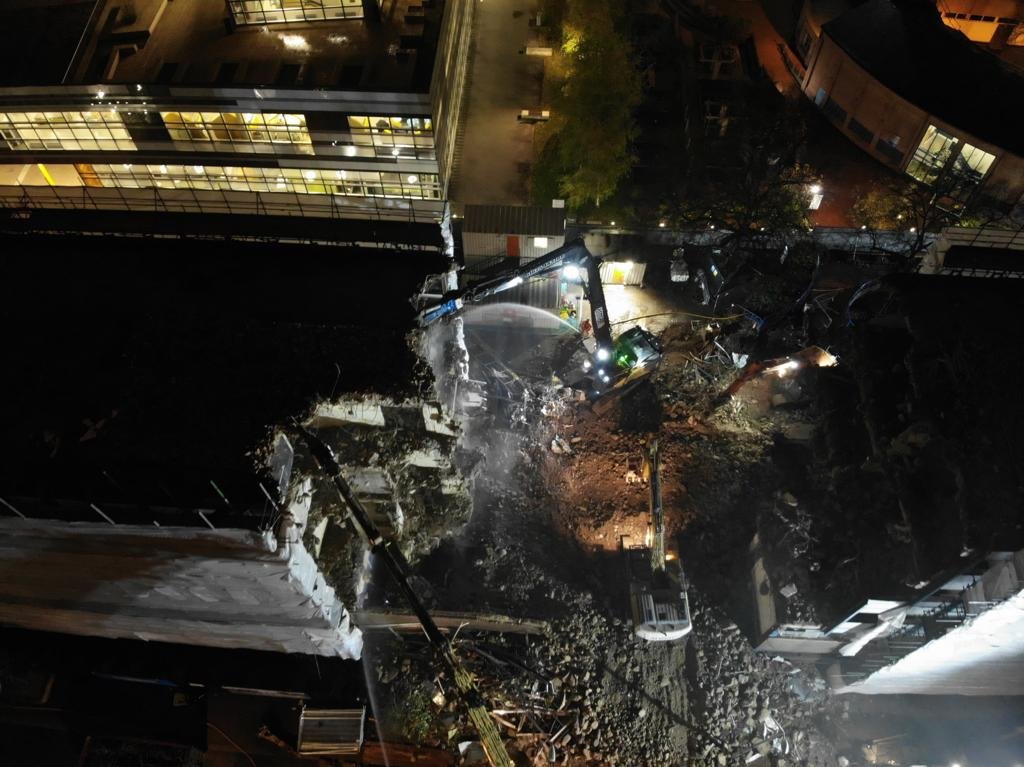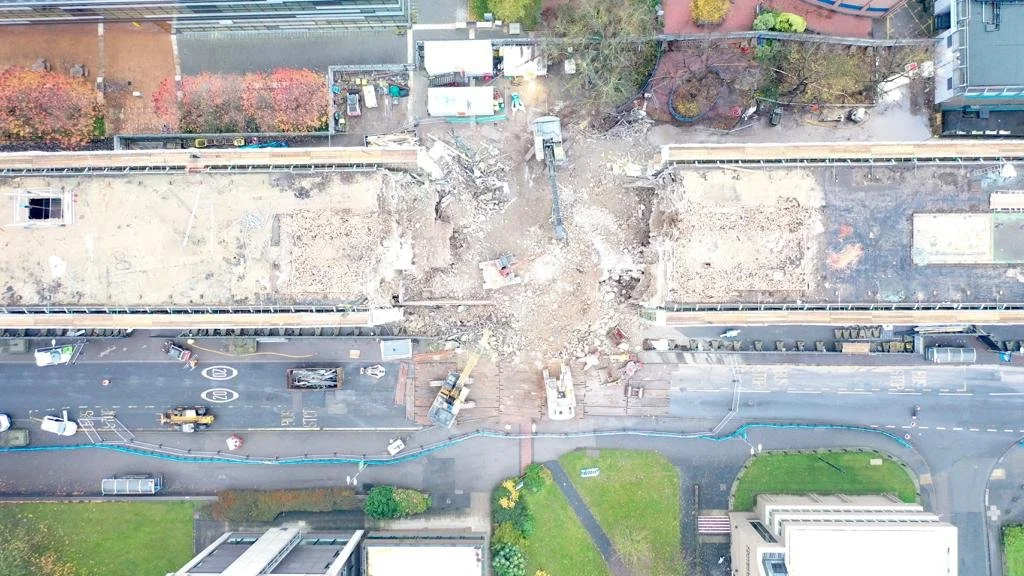JAMES STARLEY BUILDING
Client
Coventry University
Location
Coventry City Centre
CDM Role
Principal Contractor
Programme
April 2019 - June 2020
Overview
Appointed as Principal Contractor by Coventry University to undertake the demolition of a 4-storey former Science Block. The demolition was required so that an open social area could be created for use by students.
Pre-planning of logistics was one of the keys to the success of this project. The site was a direct walking route for students to other areas of the campus, there were also visitors to the closely located shopping centre and vehicle traffic to consider – Cox Street which passed the front elevation of the site is an extremely busy city centre thoroughfare and bus route. The project was managed by Project Engineer Rob Dudley who worked diligently with the university, students and third-party stakeholders during pre-planning stages to ensure that we had fully risk assessed each element and considered the needs of everyone. Our company Resident Community Officer supported Rob in his communications with third parties, including organising student workshop sessions where the demolition method was demonstrated in 3D visualisation drawings – this was very well received.
The daily site management was the use of an experienced Site Manager who had undertaken previous projects within ‘live’ locations, and was comfortable dealing with multifaceted projects that require, management of several specialist subcontractors, close scrutiny from Clients, daily co-ordination of his site team and the close proximity to occupied buildings and a main road. The scope included, service isolations, structural evaluation, installation of a Monarflex scaffold wrap, asbestos removal, soft strip and floor by floor demolition. A UXO specialist was on-call as the site was subject to extensive bombing during World War II. The main demolition was undertaken using high reach machines and remote controlled Brokk techniques. The benefit to the University was that we operated a 100% company owned fleet of CAT, Volvo and Hitachi high-reach machines, and a demolition-specific trained and experienced workforce.
Service Isolations
Multiple services ran under the building which required isolation and diversion, the service tunnels feeding the building were also designated as confined spaces, entry to these areas required permission and co-ordination with the university’s facilities management team under their permit to work system. Services elements were managed by our dedicated head office team removing the need to rely on third parties and to allow key start dates to met.
Asbestos Removal
Complex Plans of Work were produced by our experienced team who also robustly handled the ASB5 notification process for the licensable ACM’s. We have at our disposal the services of an in-house HSE licensed asbestos removal division, removing the need for us to rely on third parties. Asbestos surveys were used to mark-up identified materials, making presence clearly identifiable to the wider site team. Non licensed materials were removed by trained Armac Demolition operatives holding CAT B training, and licensable removal managed by Armac Environment. Materials removed were safely transported and held within lockable waste containers prior to removal from site to a registered landfill facility. Air monitoring was undertaken in accordance with UK HSE Guidance Documents by a third party UKAS accredited analyst. The Armac Site Supervisor worked collaboratively with the Asbestos Supervisor to strictly control during removal operations.
Soft Strip
Due to the former use of the building, prior to any soft strip works being undertaken, areas were screened for potential contamination and specialist removal works carried out - the presence of mercury was suspected due to former use of the building and established using mercury monitoring equipment, followed by removal from affected areas managed by one of our specialist supply chain contractors. Internal soft strip works were undertaken by fully trained demolition operatives under the supervision of a CCDO Gold Card Demolition Supervisor. Waste chutes were positioned at key locations off the formed scaffold to facilitate the removal of internal non-fixed elements which included, doors, floor coverings, stud partitions, toilets, sinks, ceiling finishes etc. Safety exclusion zones were formed around the chutes with locally sited waste skips.
Nuisance Control
Due to location dust, noise and vibration monitoring was undertaken pre-start and daily using a combination of handheld and static receptors, these cloud-based systems send immediate alerts should a limit be exceeded, allowing us to quickly mitigate with for example additional dust suppression or a change in attachment to reduce noise levels in a particular location. We achieved zero nuisance complaints by utilising this equipment and proactively monitoring and recording levels. This project was sufficiently resourced with labour and plant for its duration allowing the proposed programme dates to be met. In line with our sustainability commitments and the universities KPI’s we achieved a 98% recycling rate on this project. Excellent feedback on our management and overall project attitude was received from the University.
Local Artist
The scheme attracted the interest of a local artist who made several visits to site to produce these amazing paintings. They have been framed and take pride of place at our head office and service yard offices.









